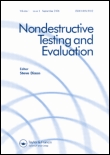
Nondestructive Testing and Evaluation
Scope & Guideline
Exploring the Future of Nondestructive Testing Methodologies
Introduction
Aims and Scopes
- Development of Advanced NDT Techniques:
The journal emphasizes the development of novel nondestructive testing methods, including but not limited to ultrasonic testing, eddy current testing, and thermography, aimed at improving defect detection and characterization in various materials. - Integration of Machine Learning and AI:
There is a strong focus on the application of machine learning and artificial intelligence in NDT, which includes the use of deep learning algorithms for defect detection, classification, and predictive maintenance. - Materials Characterization and Evaluation:
Research related to the characterization of materials, including composites, metals, and polymers, through nondestructive means is a core area, highlighting the importance of understanding material properties for structural integrity. - Structural Health Monitoring (SHM):
The journal covers advancements in structural health monitoring technologies, focusing on real-time assessment of structural integrity using various NDT methods to ensure safety and reliability. - Application in Various Industries:
NDT applications across diverse industries, such as aerospace, civil engineering, and energy, are extensively covered, showcasing the practical implications and importance of nondestructive testing in ensuring safety and performance.
Trending and Emerging
- Machine Learning and Data Analytics:
There is a growing trend towards incorporating machine learning techniques in NDT processes, which enhances the accuracy and efficiency of defect detection and analysis through data-driven models. - Smart and Autonomous NDT Systems:
Emerging research focuses on the development of smart and autonomous NDT systems that leverage real-time data processing and decision-making capabilities, reflecting the trend towards automation in inspection processes. - Multimodal NDT Approaches:
The integration of multiple nondestructive testing methods in a single evaluation framework is gaining attention, allowing for more comprehensive assessments of materials and structures. - Sustainability and Eco-Friendly NDT Practices:
Research is increasingly focusing on sustainable and environmentally friendly nondestructive testing methods, aligning with global trends towards greener technologies and practices. - Advanced Imaging Techniques:
Innovative imaging techniques, such as digital and 3D imaging methods, are becoming more prevalent in the journal, emphasizing the need for detailed visualization of defects and material characteristics.
Declining or Waning
- Traditional NDT Methods:
There is a noticeable decline in the publication of papers focusing solely on traditional nondestructive testing methods without integration of advanced technologies. This suggests a movement towards more innovative approaches that combine traditional techniques with modern technologies. - Basic Theoretical Studies:
Research emphasizing purely theoretical aspects of nondestructive testing, without practical application or experimental validation, appears to be decreasing. The trend indicates a preference for studies that provide tangible results and applications. - Low-Technology Approaches:
Papers detailing low-technology or low-cost nondestructive testing methods are becoming less frequent as the field progresses towards high-tech solutions and sophisticated methodologies that enhance detection capabilities.
Similar Journals
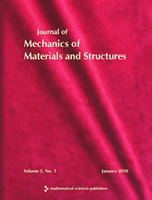
Journal of Mechanics of Materials and Structures
Bridging Theory and Application in Material Sciences.Journal of Mechanics of Materials and Structures, published by Mathematical Science Publishers, is a distinguished periodical in the field of Applied Mathematics and Mechanics of Materials. With the ISSN 1559-3959, this journal has been a pivotal platform since its inception in 2006, providing insights and advancements in the mechanics of materials and their structural applications. Operating out of the University of California, Berkeley, this journal not only boasts a respectable standing within its categories, ranking Q4 in Applied Mathematics and Q3 in Mechanics of Materials as of 2023, but it also serves a crucial role in fostering academic discourse among researchers, practitioners, and students alike. Although it does not currently offer open access, its contributions to the respective fields are invaluable, underscoring the relevance and importance of continued research in understanding material behavior and structural integrity. Whether investigating theoretical frameworks or engineering applications, the Journal of Mechanics of Materials and Structures remains an essential resource for anyone dedicated to the advancement of the science of materials and structures.

International Journal of Structural Integrity
Pioneering Research for Structural Integrity and InnovationInternational Journal of Structural Integrity is a premier peer-reviewed academic journal published by EMERALD GROUP PUBLISHING LTD in the United Kingdom. As a valuable resource in the fields of Civil and Structural Engineering, Mechanical Engineering, and Mechanics of Materials, this journal serves to advance knowledge and foster innovation in these critical areas of study. With an impressive impact factor reflected in its 2023 category quartiles, ranking Q2 across multiple engineering disciplines, the journal is recognized for its contributions to research and practical application. Researchers can benefit from its rigorous publishing standards that encompass a wide array of interdisciplinary topics pertaining to structural integrity. Accessing the journal is facilitated for those seeking high-quality research and findings, vital to both academia and industry. Since its inception in 2010 and extending until 2024, the journal continues to attract scholarly articles that push the boundaries of engineering knowledge, making it an essential platform for professionals, students, and researchers seeking to stay at the forefront of structural engineering."

Composites Research
Connecting Minds in Composite ResearchComposites Research is an esteemed academic journal dedicated to advancing the field of composite materials, published by the Korean Society of Composite Materials. With a focus on innovative research and development, this journal serves as a vital platform for researchers, professionals, and scholars in the field, promoting high-quality papers that discuss both theoretical and practical aspects of composite materials. Although it operates under a traditional access model, the journal remains committed to disseminating essential knowledge and cutting-edge findings relevant to the latest trends and technological advancements in composites. The ISSN 2288-2103 and E-ISSN 2288-2111 ensure the widespread visibility and accessibility of published works. The journal is strategically positioned to contribute to the growing body of knowledge in composite research, enabling the exchange of ideas and collaboration among a global audience.

SENSORS AND MATERIALS
Exploring the Synergy of Instrumentation and Materials EngineeringSENSORS AND MATERIALS is a pivotal academic journal dedicated to the dissemination of research in the fields of instrumentation and materials science. Published by MYU, SCIENTIFIC PUBLISHING DIVISION in Japan, this open-access journal has been fostering innovative research since its inception in 1996. With an ISSN of 0914-4935, it serves as a platform for the scholarly communication of studies that intertwine the developments in sensor technology and materials engineering. As of 2023, it occupies a respectable position in the category quartiles, ranking Q3 in both Instrumentation and Materials Science (miscellaneous), reflecting its commitment to quality research. The journal's Scopus rankings further highlight its relevance, being placed at Rank #317 in General Materials Science and Rank #105 in Instrumentation. With its open-access model, SENSORS AND MATERIALS ensures widespread availability of cutting-edge research that is critical for researchers, professionals, and students engaged in advancing the fields of sensor technologies and material innovations.
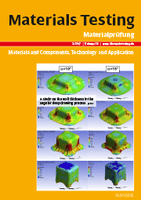
Materials Testing
Empowering Research in Mechanics of MaterialsMaterials Testing is a renowned journal published by Walter de Gruyter GmbH, serving the global scientific community in the fields of Materials Science, Mechanical Engineering, and Mechanics of Materials. With an ISSN of 0025-5300 and an E-ISSN of 2195-8572, this journal has been a significant contributor to the discourse on material performance, testing methodologies, and engineering innovations since its inception. The journal is recognized for its rigorous peer-review process and holds a commendable Q2 quartile ranking in multiple categories for 2023, showcasing its impact and relevance in the field. With open access options available, Materials Testing aims to disseminate valuable research findings and practical insights that drive advancements in technology and materials applications. By addressing the latest challenges and developments within the field, this publication serves as an essential resource for researchers, professionals, and students alike, fostering a deeper understanding of material properties and testing techniques.

Journal of Structural Integrity and Maintenance
Innovating Safety and Sustainability in Engineering PracticesThe Journal of Structural Integrity and Maintenance, published by Taylor & Francis Ltd, serves as a prestigious platform dedicated to the advancement of knowledge in the fields of structural integrity, civil engineering, and materials science. With an ISSN of 2470-5314 and an E-ISSN of 2470-5322, this journal is uniquely positioned to address the critical challenges faced by researchers and professionals in building and construction, mechanical engineering, and related domains. Since its inception in 2016, this journal has been consistently recognized for its quality, currently holding a Q2 rank across several disciplines, including Building and Construction and Civil and Structural Engineering in 2023. The journal aims to publish high-quality research that contributes to the understanding and maintenance of structural integrity, fostering innovations that promote safety, efficiency, and sustainability in engineering practices. Researchers and students alike are encouraged to engage with this rich repository of knowledge, which plays a vital role in shaping future advancements in structural engineering and materials science.
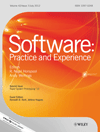
SOFTWARE-PRACTICE & EXPERIENCE
Bridging academic rigor and practical experience in software development.SOFTWARE-PRACTICE & EXPERIENCE, published by Wiley, is a prestigious journal that has significantly contributed to the field of software engineering since its inception in 1971. With a Q2 ranking in Software according to the 2023 category quartiles, it stands among the top tier of journals, positioned in the 79th percentile within Scopus’s Computer Science _ Software category. The journal focuses on disseminating high-quality research that reflects both academic rigour and practical application in software-related practices, ensuring that it remains relevant for researchers, professionals, and students alike. Although it does not currently offer Open Access options, it continues to provide invaluable insights and thorough explorations of contemporary issues in software development, methodology, and experience. As it converges toward 2024, SOFTWARE-PRACTICE & EXPERIENCE aims to foster a greater understanding of effective software practices in a rapidly evolving technological landscape.

MATERIALS EVALUATION
Fostering Excellence in Materials Assessment.MATERIALS EVALUATION is a pivotal journal published by the American Society for Nondestructive Testing, focusing on the critical intersection of materials science and engineering practices. Established in 1970, this journal serves as a vital resource for researchers and practitioners interested in the nondestructive testing and evaluation of materials, contributing significantly to advancements in quality assurance and materials reliability. While it currently holds a Q4 classification in Materials Science (miscellaneous), Mechanical Engineering, and Mechanics of Materials, its longstanding history and commitment to disseminating important research make it an essential platform for those within the field. The journal is accessible through various academic libraries and subscription options, bridging the gap between theoretical research and practical applications, hence appealing to a broad audience of professionals and students alike. With opportunities for publication in an evolving field, MATERIALS EVALUATION remains an integral part of ongoing discussions and developments in materials assessment and nondestructive testing methodologies.

SOFTWARE TESTING VERIFICATION & RELIABILITY
Elevating Software Quality Through Rigorous ResearchSOFTWARE TESTING VERIFICATION & RELIABILITY, published by Wiley, serves as a premier journal in the fields of software engineering, risk management, and quality assurance. With an ISSN of 0960-0833 and E-ISSN 1099-1689, this journal has been a pivotal resource since its inception in 1991, providing insights into the latest methodologies and technologies related to software testing and verification through to 2024. The journal is recognized for its rigorous peer-review process and boasts an impressive reputation, rated Q2 in Media Technology and Safety, Risk, Reliability and Quality, along with a Q3 rank in Software as of 2023. Its Scopus ranks further solidify its standing within the academic community, placing it in the 62nd and 43rd percentiles for Engineering and Computer Science, respectively. The journal fosters a collaborative environment for researchers, professionals, and students, encouraging the exploration of cutting-edge research, applications, and innovations in software testing and reliability, making it an invaluable asset for those seeking to advance their knowledge and expertise in this essential area.
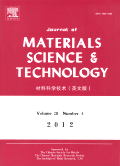
Journal of Materials Science & Technology
Unveiling Breakthroughs in Material DevelopmentThe Journal of Materials Science & Technology, published by JOURNAL MATER SCI TECHNOL in China, is a leading forum for the latest research in the multidisciplinary field of materials science. With the ISSN 1005-0302 and E-ISSN 1941-1162, this esteemed journal boasts an impressive impact factor and has established itself as a vital resource for professionals, researchers, and students alike. Covering a wide range of topics, including ceramics, composites, materials chemistry, mechanical engineering, and polymers, it has achieved a coveted Q1 ranking in multiple categories as of 2023, reflecting its position in the top tier of scholarly publications. Notably, the journal excels in its Scopus ranks, placing within the top 5% in categories such as Metals and Alloys and Mechanical Engineering. Aiming to foster knowledge and innovation in material development and application, the journal is committed to facilitating groundbreaking research and collaborations that propel the field forward. With its convergence of insights from 1993 to 2025, the Journal of Materials Science & Technology remains an indispensable resource for the advancement of materials science.